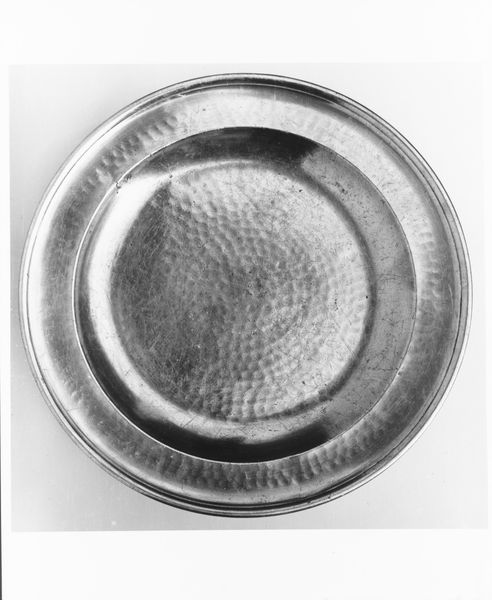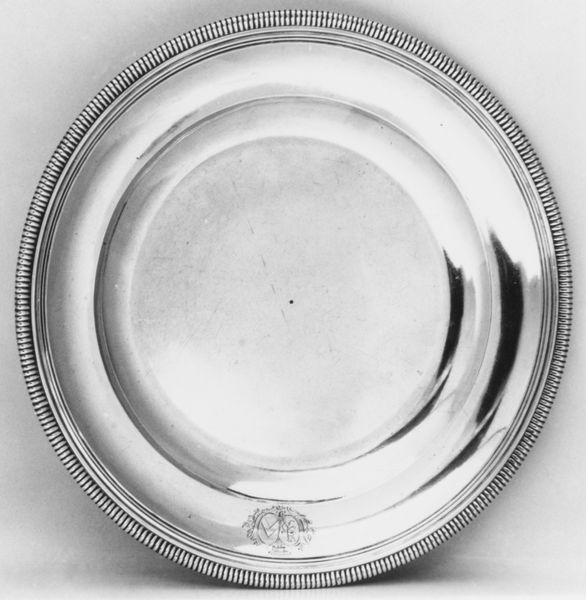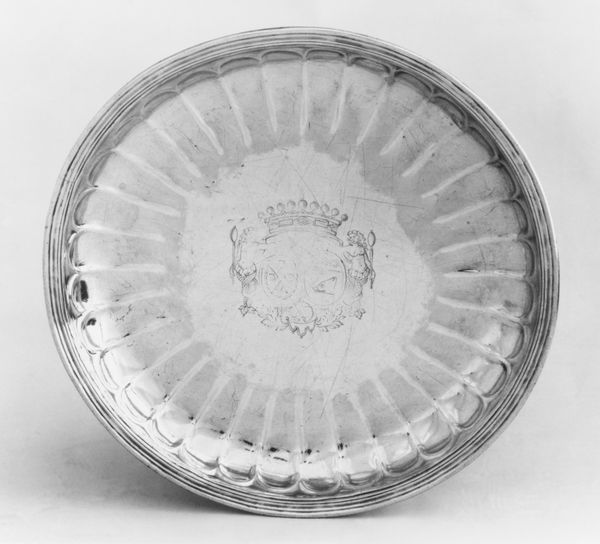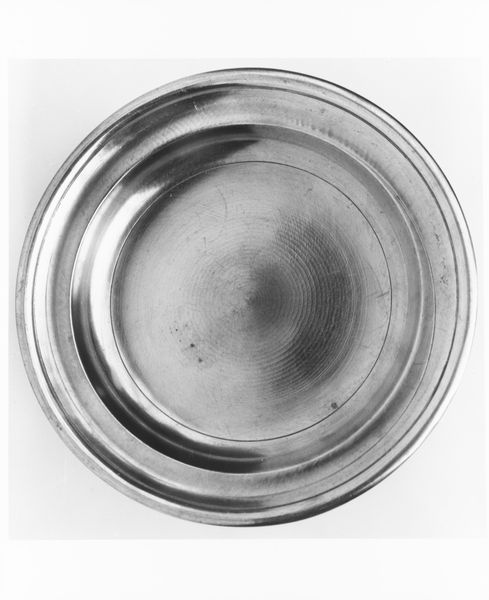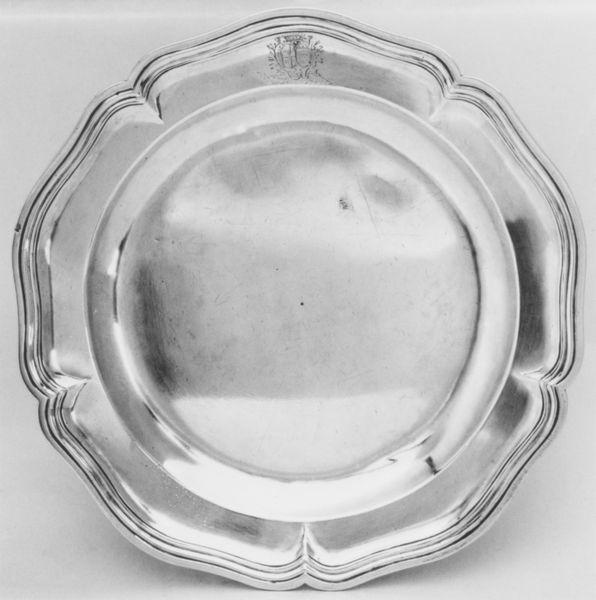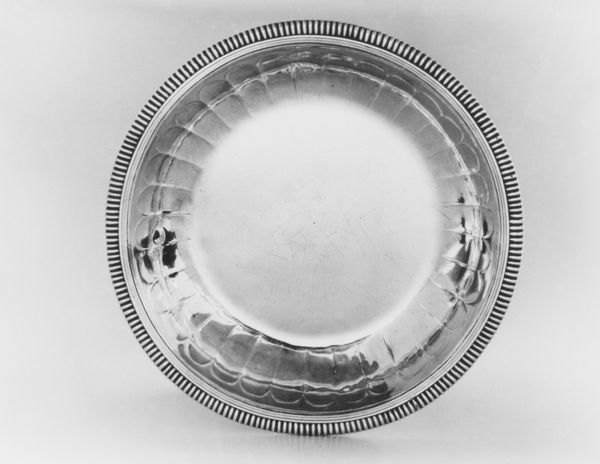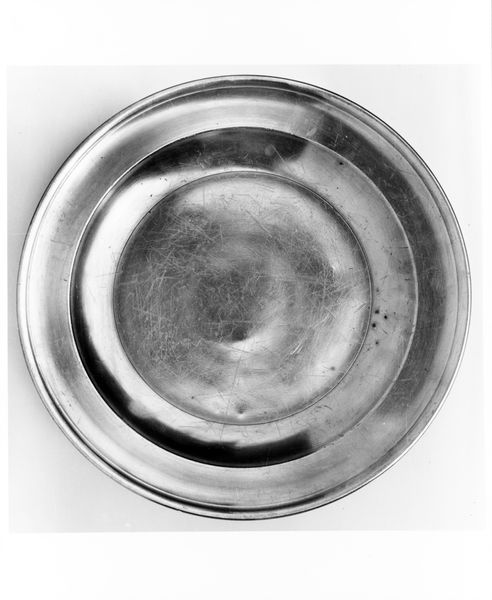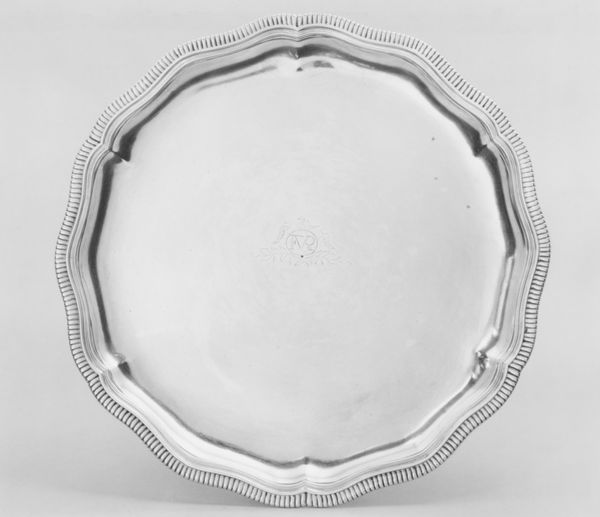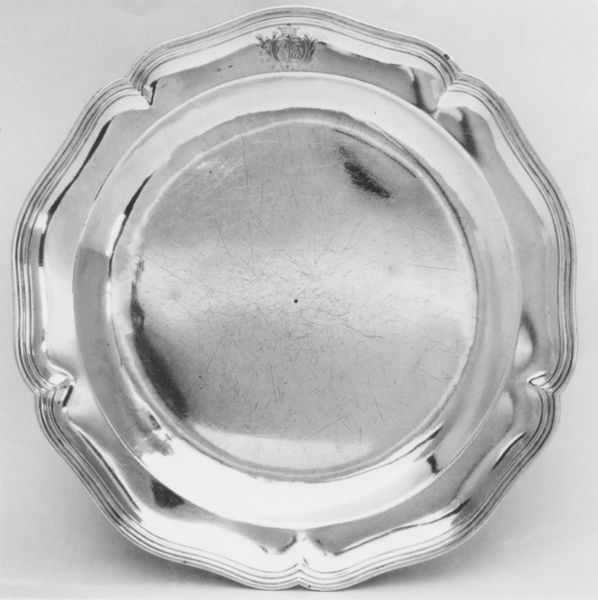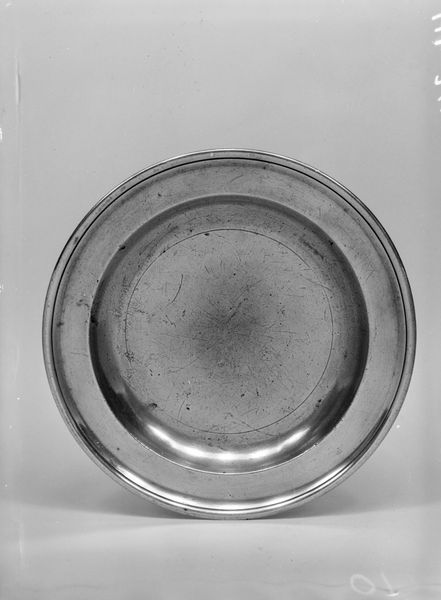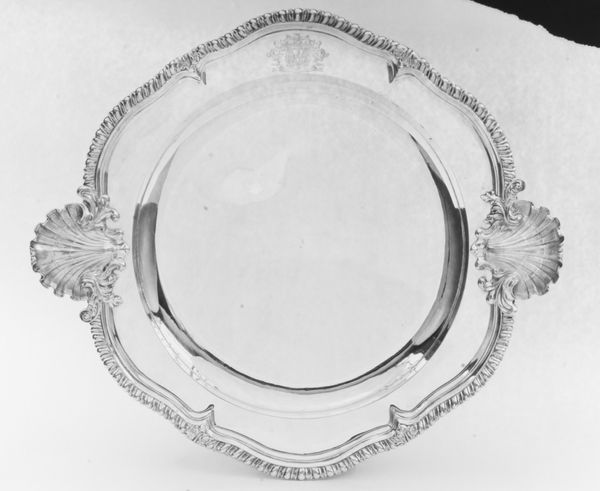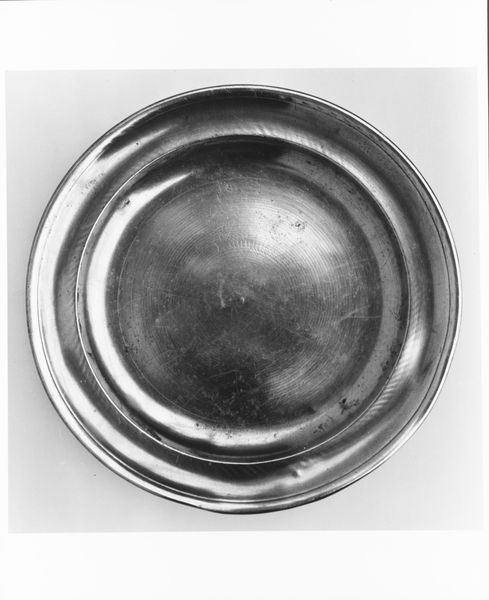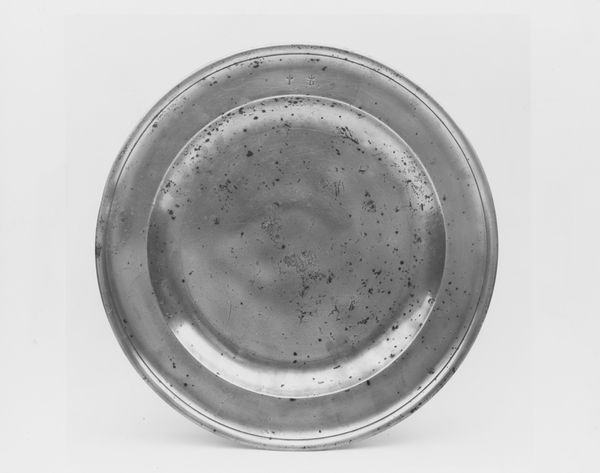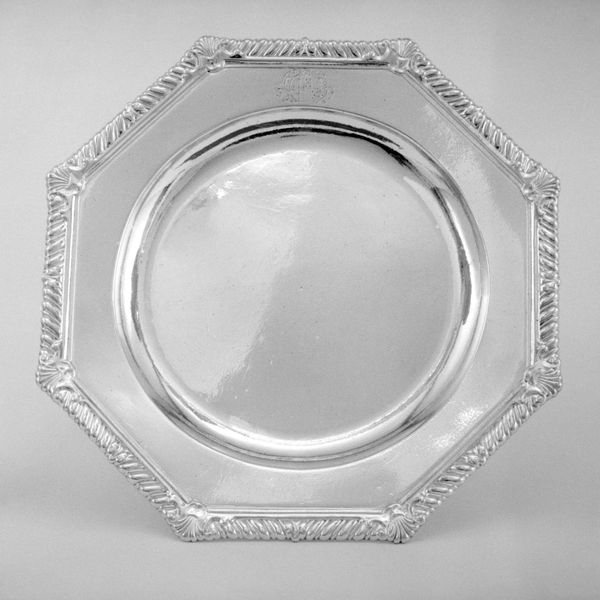
metal
#
metal
#
sculpture
#
black and white
#
united-states
#
decorative-art
Dimensions: H. 1 1/4 in. (3.2 cm); Diam. 8 1/8 in. (20.6 cm); 16 oz. 16 dwt. (522.8 g)
Copyright: Public Domain
This silver salver was crafted by Samuel Kirk, an American silversmith, sometime in the 19th century. The circular form of the tray, with its concentric rings of decoration, creates a sense of balance and order. Consider how the formal elements of the salver—its shape, texture, and the arrangement of its decorative motifs—function as a semiotic system. The repeated circular patterns and the intricate border design speak to a cultural code of luxury and refinement. The symmetry implies a structured social order, reflecting the values of its time. Yet, the handmade nature introduces slight variations, hinting at the individual craftsmanship. In this context, the salver challenges the notion of mass production and uniformity by showcasing artisanal skill. It represents a moment in history where handcrafted objects were still valued for their uniqueness. It encourages us to reflect on how the intersection of form and function communicates social and aesthetic values.
Comments
No comments
Be the first to comment and join the conversation on the ultimate creative platform.
